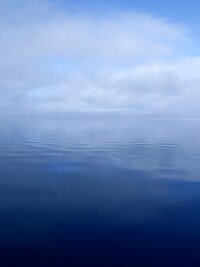
Photo from wikipedia
Iran faces a water shortage crisis due to its long and frequent droughts and rapid population growth. In this study, moisture sources have been determined in 161 precipitation events from… Click to show full abstract
Iran faces a water shortage crisis due to its long and frequent droughts and rapid population growth. In this study, moisture sources have been determined in 161 precipitation events from 12 stations using a Hybrid Single-Particle Lagrangian Integrated Trajectory (HYSPLIT) model. Ten main moisture sources have been identified among which the Persian Gulf and the Persian Gulf with terrestrial sources are dominant. Backward trajectory outputs demonstrate that the precipitation events in the stations in the north of Iran originate mostly from the Caspian Sea and terrestrial sources. These precipitation events are mostly plotted on the Global Meteoric Water Line (GMWL) or between GMWL and Eastern Mediterranean Meteoric Water Line (EMMWL). Precipitation events in the middle and south of Iran stations receive moisture mostly from the Persian Gulf and terrestrial sources and they are mostly plotted on EMMWL. Linking backward trajectory models with precipitation events (δ 18O and δ 2H) determines the general isotope characteristics of each moisture source. Most of the precipitation events originate from high sea surface temperature (SST) water bodies and are plotted on EMMWL. However, precipitation events originating from lower SST water bodies are mostly plotted on GMWL and between GMWL and EMMWL. Plotting the average (δ 18O and δ 2H) in the studied stations on the meteoric water lines of the regions located on the dominant air masses trajectories toward Iran confirms the dominant moisture sources for the studied stations and also other obtained results by stable isotope technique and HYSPLIT model in this study.
Journal Title: Theoretical and Applied Climatology
Year Published: 2019
Link to full text (if available)
Share on Social Media: Sign Up to like & get
recommendations!